Mark Tobey (1890–1976) was among the 20th century’s most cosmopolitan of painters, his distinctive approach to abstraction – fusing elements of Western modernism with Oriental calligraphy – bringing him considerable acclaim and success in his later career. Yet, even at a time when some Europeans considered him America’s foremost living painter, Tobey was comparatively neglected at home, his reputation overshadowed by the younger, more muscular practitioners of Abstract Expressionism – Pollock, Kline and de Kooning foremost among them. Today, Tobey receives barely a footnote in the mainstream narrative of the history of abstraction.
With the inclusion of two of Tobey’s paintings in last year’s blockbuster ‘Abstract Expressionism’ exhibition at the Royal Academy in London, and now with this ambitious, elegantly hung show at the Peggy Guggenheim Collection in Venice – the first comprehensive retrospective of his work in Europe in two decades – it appears that the artist’s oeuvre is ripe for reappraisal.
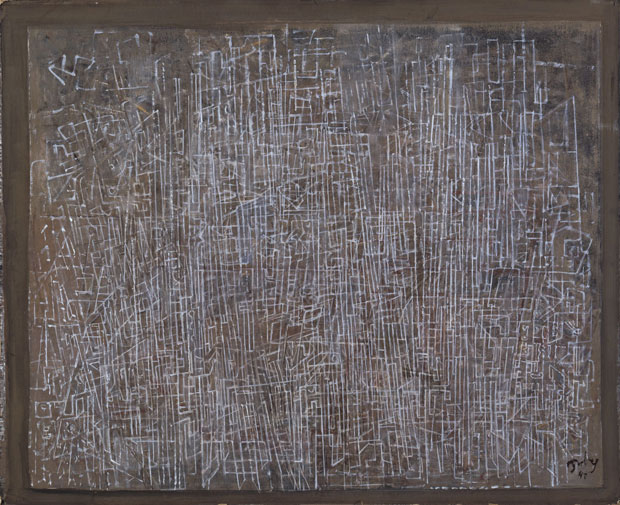
Lines of the City (1945), Mark Tobey. © 2017 Mark Tobey / Seattle Art Museum, Artists Rights Society (ARS), New York
Born in Wisconsin, Tobey was an inveterate experimenter and traveller who was honoured with some of the highest distinctions that the European art scene of his time could bestow. In 1958, alongside Rothko, he represented the USA at the 29th Venice Biennale where his painting Capricorn was awarded the City of Venice painting prize. Not since Whistler’s Little White Girl – Symphony in White, No. 2 triumphed at the first biennale in 1895, had an American artist won the gold medal. Three years later, a major retrospective of Tobey’s work was held at the Pavillon de Marsan in the Louvre, an unprecedented achievement for a living – and American – artist. One French critic wrote in 1952 that Tobey’s importance could ‘never be stressed enough,’ describing him as one of ‘those all too rare individuals of authentic value.’
With 70 paintings spanning the 1920s through to 1970, the Guggenheim show traces in chronological order the evolution of Tobey’s work, from his various ventures into cubism, De Chirico-esque surrealism and Hartley-style mystical landscapes, to his groundbreaking ‘white writing’ style and his significant influence on the ‘all-over’ method of Abstract Expressionism.
What becomes clear is that Tobey’s development reflected his deep knowledge of the art of the past and diverse cultures, as well as the ideas and innovations in Western art of his own time. He was as aware of – and as accomplished in – Renaissance tempera techniques as he was of Oriental calligraphy and the pioneering movements in modern painting. He attended the Paris salons of Gertrude Stein, and counted Duchamp, Feininger, Hepworth and Nicholson among his numerous close associates. Nicholson was alert to Tobey’s skill, writing to a friend, ‘I much admire his work and think that he has become one of the two or three best living artists – really a superb painter.’
Tobey’s breakthrough painting, Broadway (1935), is on display in Venice on a rare outing from the Metropolitan Museum in New York. In it, the artist uses pulsing webs of white painted lines to conjure up the dynamism and clamour of the famous thoroughfare. This new approach followed an extended sojourn in the Far East where Tobey studied Zen calligraphy, and launched the ‘white writing’ style that characterised his painting throughout the ensuing decades. ‘White lines in movement symbolize light as a unifying idea which flows through the compartmented units of life,’ he wrote of these works, ‘bringing a dynamic to men’s minds, ever expanding their energies towards a larger relativity.’ As William Seitz, a curator at MoMA in the 1960s, put it: ‘He has made line the symbol of spiritual illumination.’
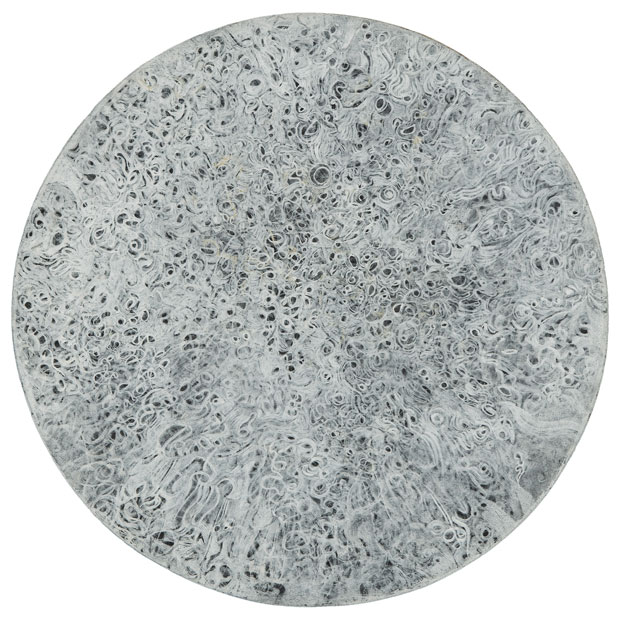
World (1959), Mark Tobey. © 2017 Mark Tobey / Seattle Art Museum, Artists Rights Society (ARS), New York
It is perhaps the overtly spiritual aspect of Tobey’s work – his study of Zen Buddhism, his lifelong dedication to the Bahá’í Faith, his stated intention to convey such ideas through art – that resulted in his name being dropped from the unfolding history of American art. Clement Greenberg, the most influential of apologists for modern painting of the period, placed particular stress on the formal elements of abstraction, while artists’ more otherworldly ideals tended to be played down.
These factors, combined with Tobey’s non-demonstrative personality, the small scale and delicacy of his works, his background in commercial illustration, and his distance both geographically and temperamentally from the New York School, counted against him. The critic sidelined him, and even categorically – and erroneously – stated that Jackson Pollock had never seen Tobey’s work. It is a fact that the young painter viewed Tobey’s paintings in New York, silently studying Remote Field and Bars and Flails (both 1944) in particular. Indeed Remote Field, on display here, fairly crackles with electric energy – a stylistic antecedent to Pollock’s iconic Blue Poles of 1952.
Ironically, since it became his trademark style, Tobey initially did not see a future for his ‘white writing’ and continued to pursue multiple approaches. Later works are enriched by imagery drawn from indigenous American culture, and in the 1950s, Tobey put himself through intensive training in Japanese Sumi techniques, using opaque black ink thrown and splashed in a controlled way onto paper: these are among the most striking pictures in the exhibition. The restless experimenter could never be satisfied with just one style. ‘At a time when experimentation expresses itself in all forms of life, search becomes the only valid expression of the spirit.’
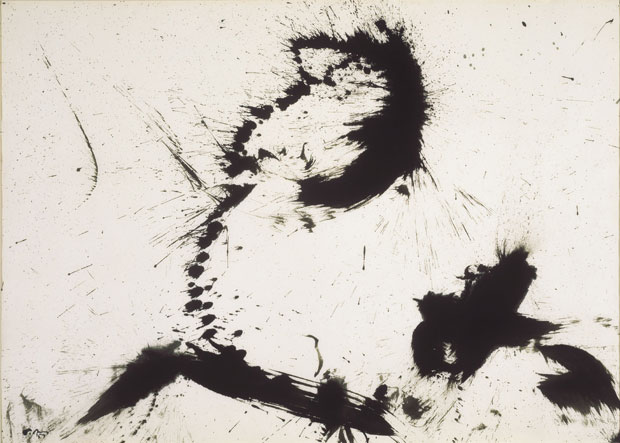
Untitled (Sumi Drawing) (1957), Mark Tobey. © 2017 Mark Tobey / Seattle Art Museum, Artists Rights Society (ARS), New York
This exhibition surveys the breadth of Tobey’s practice and reveals its extraordinarily nuanced yet radical beauty. The artist’s search for a language that could express his diverse interests, and unify the apparently dichotomous worlds of the city and nature, of progress and the ineffable spirit of humanity, is vividly captured. It can only be hoped that this moving, thought-provoking show will go some way to restoring Tobey to his rightful place in the story of 20th-century art.
‘Mark Tobey: Threading Light’ is at the Peggy Guggenheim Collection, Venice, until 10 September 2017, and at the Addison Gallery of American Art, Phillips Academy, Andover, Massachusetts, from 4 November 2017–11 March 2018.
Unlimited access from just $16 every 3 months
Subscribe to get unlimited and exclusive access to the top art stories, interviews and exhibition reviews.

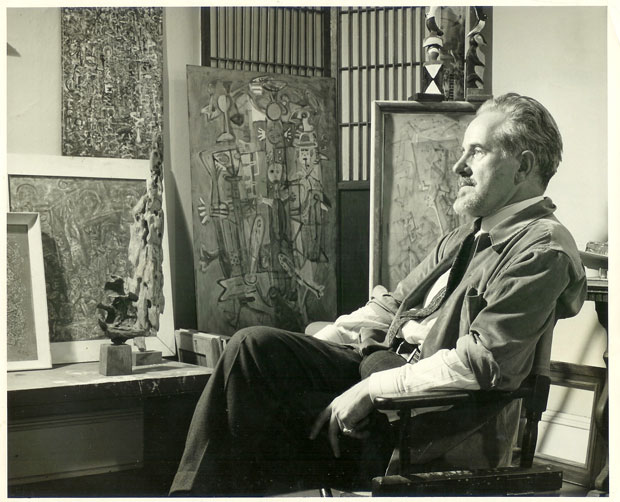
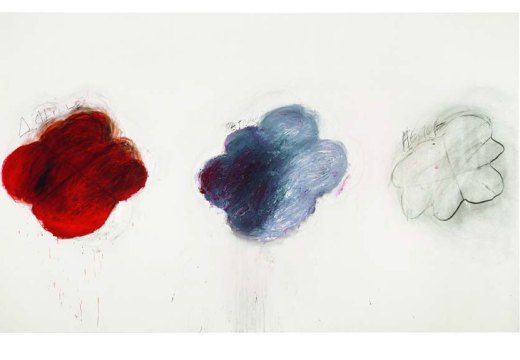
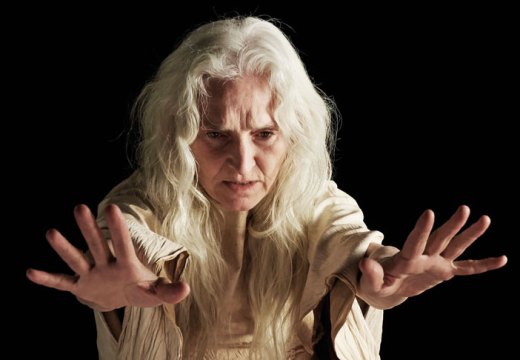










![Masterpiece [Re]discovery 2022. Photo: Ben Fisher Photography, courtesy of Masterpiece London](http://www.apollo-magazine.com/wp-content/uploads/2022/07/MPL2022_4263.jpg)
It’s time for the government of London to return to its rightful home